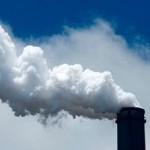 About the Author:
About the Author:Michael Bittner, CPEA, is an associate partner in the Boston, U.S.A. office of Environmental Resources Management (ERM) and is the editor of the EHS Journal, an international e-zine devoted to sharing practical information among environmental, health and safety professionals. He has more than 20 years of experience in the EHS (Environment, Health and Safety) field, including 17 years of EHS consulting experience and 4 years as the corporate environmental manager for a U.S. Department of Defense contractor. He is also a member of the Board of Directors for The Auditing Roundtable.

On 4 October 2010, Maplecroft launched rebalanced rankings for the Climate Innovation Indexes (CIIs), which rate the top 350 U.S. companies based on their climate innovation and carbon management programs. The CIIs identify climate change leaders that are positioning themselves to seize opportunities and deliver sustained growth in a carbon-constrained future business environment.
A total of 350 companies were rated against 100 performance-based criteria. These criteria include:
- the capacity to generate innovative new technologies or initiatives that capitalize on climate-related market opportunities
- the management of climate change through policies, disclosure, targets, verification and supply chain processes
- the mitigation of carbon emissions
- adaptation by modeling future climate impacts and changing company operations and strategy and
- reductions in overall greenhouse gas (GHG) emissions.
Top 10 U.S. Climate Change Leaders
The top ten ranked companies in the rebalanced CII Leaders Index are:
- General Electric
- Ford Motor Co.
- Alcoa Inc.
- Air Products & Chemicals Inc.
- Johnson Controls Inc.
- Praxair Inc.
- Lexmark International Inc.
- Intel Corp.
- United Technologies Corp.
- Advanced Micro Device Inc.
Characteristics of Climate Change Leaders
Climate change leaders excel in key areas of climate innovation including:
- technological advances in fuels, equipment and emissions monitoring,
- managing exposures to the impacts of climate change, and
- creating efficiencies in energy use, business processes and transportation.
Leading companies are also innovating through cross-industry collaborations, employee incentives and unique ways of embedding innovation as part of their core business.
Financial Performance of Climate Change Leaders
Maplecroft has found that companies that are climate change leaders also deliver higher financial performance (measured as five-year return on equity, based on Bloomberg data). This is confirmed by the performance of the Maplecroft CIIs, which since their launch in January, continue to out-perform the Standard and Poor’s 100 by up to 3.5%. The CIIs faired even better when compared with other well-known climate related indexes, out-performing the HSBC Global Climate Change Benchmark by up to 8.7% and the Royal Bank of Scotland Climate Change & Environment Index by up to 25.3%.
Professor Alyson Warhurst, CEO of Maplecroft, said, “The CIIs are a valuable tool for investors looking to pick winners, as they identify the most resilient, most innovative and best positioned companies to gain competitive advantage in the new low-carbon economy.”
Furthermore, the CII findings demonstrate an opportunity for businesses across all sectors to distinguish themselves in terms of their climate innovation efforts as a means of strengthening reputation and building shareholder value.
This CII report is the first reweighting of the indexes, which were initially launched on the Bloomberg Professional® service in January 2010.
Notes:

About Maplecroft
Maplecroft is a leading source of global risk analysis. They research, index and map over 500 risks and issues to identify exposures and opportunities in both countries and companies. Maplecroft’s products and services are a vital resource for businesses and investors requiring analysis and insight into complex political, economic, social and environmental risks. The Maplecroft Climate Change Risk Atlas 2010 evaluates the risks relating to climate change vulnerability, carbon dioxide (CO2) emissions from energy, CO2 emissions from land use and unsustainable energy use. For more information about Maplecroft, visit http://maplecroft.com/.














